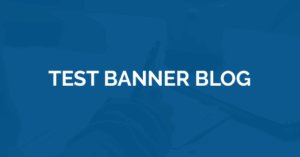What is always-on marketing and why is it essential for your digital strategy?
This time it was our Customer Care Manager, Leon Termote’s turn to take to the stage. For this third webinar in our Inspirational Thursdays series, he talked about what is always-on marketing, real-life examples of effective always-on campaigns, and how to engage customers throughout the entire customer journey. Keep on reading and discover the key takeaways in this article.
? If you prefer to watch the webinar replay, it’s right here.
What is always-on marketing?
Marketing is not all about rushing and doing short actions. It’s also being consistent and having your message out there, always accessible, to continuously capture customers’ attention and meet their needs at any moment.
Always-on marketing represents a marketing strategy centred around consistent audience engagement and messaging that signals your availability. [Source]
To give you a metaphor, with always-on marketing campaigns, you’ll be like the turtle in the image below, always there and ending up winning the race.
Why does always-on marketing matter?
- With always-on marketing, you centre your strategy on your customers and their needs, enabling you to build better customer relationships.
- You ensure consistency. Customers expect more out of your brand. They expect the product or service to be present when they need it, at the moment they need it and in the way they want it. And this is why always-on is particularly useful.
- Always-on marketing allows you to save time and money. You make your campaign, you optimise it and you keep it the way it is.
- By being always-on, you remain top of mind and you build audience loyalty.
How can Qualifio help you throughout the entire customer journey?
Always-on marketing: the reach stage
We’re here at the exploration, discovery phase. At this stage, brands build awareness to increase their visibility and bring traffic on their channels. Let’s give you some examples:
1. Ducray: the brand launched a personality test around the topic of hair loss. The test provides participants with six different profiles detailing the hair loss type, the type of care and treatment recommended with CTA’s to their products and online store. In this case, there is nothing to win, just a helpful piece of content made available permanently on their website to help consumers to find out more about themselves and discover the products made for them.
2. Engie: the energy provider also ran continually on its blog a personality test “Is it time to change your boiler?”. After answering five simple and illustrated questions, participants are led to a recommendation regarding whether it’s time to change or check their boiler. Each profile has a Facebook pixel integrated, allowing Engie to capture segments and use them for a retargeting campaign afterwards. The result: a CTR above 1% and a lower CPC on their promotional posts.
3. Èggo: in the same vein, Èggo launched a swiper enabling participants to discover their dream kitchen. Initially, they created the campaign for a fair. Visitors had the opportunity to come to their booth, play and get their kitchen type. It worked so well that they decided to make it available on their website permanently.
Always-on marketing: the act stage
At this stage, brands encourage interactions and persuade their prospects to take the next step on their journey to generate leads. It appears that instant wins are the best-in-class lead generators.
1. Le Slip Français: an excellent example of an acquisition campaign launched by the brand is the wheel of fortune full of briefs and panties to win, available on its e-commerce platform, via a pop-up on its homepage. Once a prospect becomes a customer, the pop-up is no longer displayed! To spin the wheel, participants must first fill out a form (first name and email address) in which an opt-in to the brand’s newsletter is proposed.
2. Respire: the eco-friendly brand launched a jackpot to win suncare products during the whole summer, promoted via paid ads and a pop-up on their website, like Le Slip Français! As a thank you, all participants received a unique code allowing them to benefit from a 10% discount on the brand’s entire suncare range.
3. Decathlon: the brand launched a purchase guide for 12 different sports to reduce search time, add interactivity and generate leads. Based on participants’ answers, Decathlon displays a link redirecting them to the right page on its e-commerce.
4. Dille & Camille: like Eggo, Dille & Camille launched a swiper with product recommendations at the end and a link to its e-commerce platform for participants to purchase the products matching their personality.
Always-on marketing: the convert stage
A conversion can be anything: clicking a button, filling out a form, subscribing to a newsletter, downloading content or making a purchase. Are you ready for some great and efficient campaigns that will increase your conversion rate and encourage users to complete the desired action on your website? Let’s go!
1. Luminus: the energy supplier launched an interactive guide, helping prospects to make the right choice for their home insurance. Participants are asked to indicate what they want to cover in their homes by clicking on different images. After completing the test, they are presented with the solutions that are best adapted to their needs, and are able to make the most of some exciting promotions immediately.
2. L’Etudiant: the French media published a study guide with 15 questions and many profiles on their website, that provides information about the types of studies that match the participant’s answers. In their guide, they added a form with conditional form fields to nurture participants with the right content in the future.
3. Biotherm: compared to other promotional methods, product sampling can increase your sales significantly. 60% of testers are more likely to buy a product after sampling and L’Oréal have understood that! Their brand Biotherm published a form on their website to receive free samples. They also offered an opt-in to their newsletter in the form and got an opt-in rate of 91%.
Always-on marketing: the engage stage
Here the goal is to develop long-term relationships with customers and build audience loyalty. Here are some examples of great campaigns:
1. Gulli: the French television channel has a dedicated section on its website gathering all its always-on campaigns, generating 40% of the total traffic of its website. For the editorial games that remain on the website continuously, they have selected the mechanics that bring them the most page views, such as the puzzle or the memory game, for example.
2. Accor Hotels: they launched a customer satisfaction survey to involve their customers and engage them actively. According to Gartner, 85% of respondents say they have a positive perception of brands offering surveys.
3. AS Monaco: the football club created a runner game available on its Facebook page, to keep its audience active and entertained even in down periods. “Become the number 1 and win every week plenty of exclusive AS Monaco prizes”. An addictive campaign giving great visibility to AS Monaco sponsors, thanks to their logos displayed in the background.
In conclusion, always-on marketing is about engaging continuously with your audience. Brands should consider how they can ensure their marketing is always on the minds of their target audience to actively reach new customers and retain existing ones.
If you want to download the presentation slides or watch the webinar replay, it’s right here!











